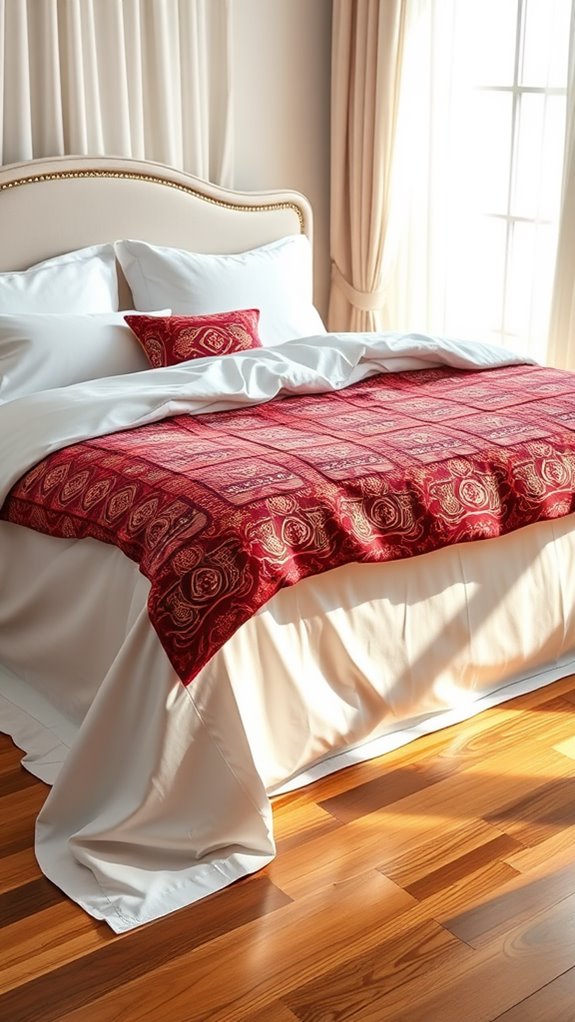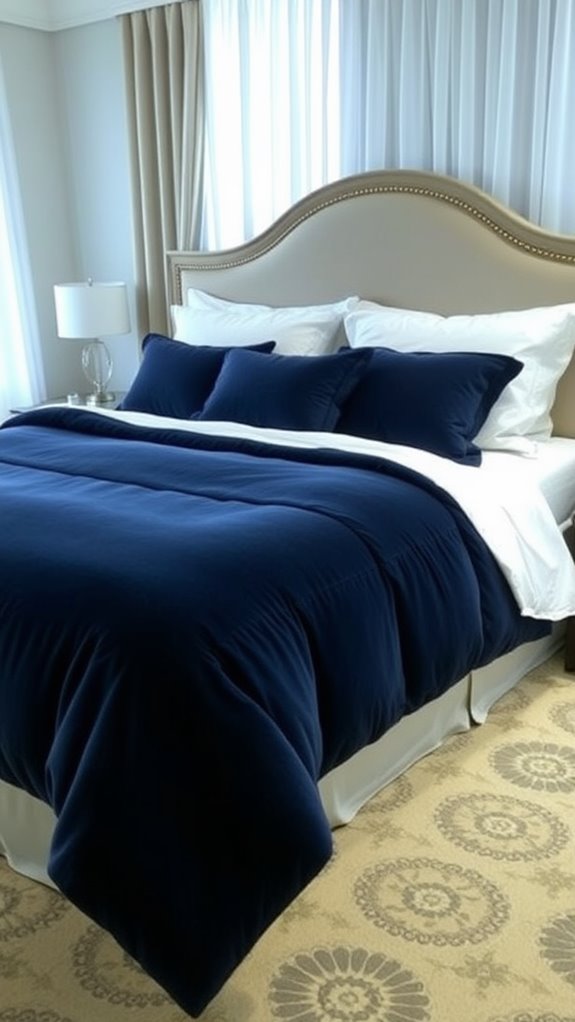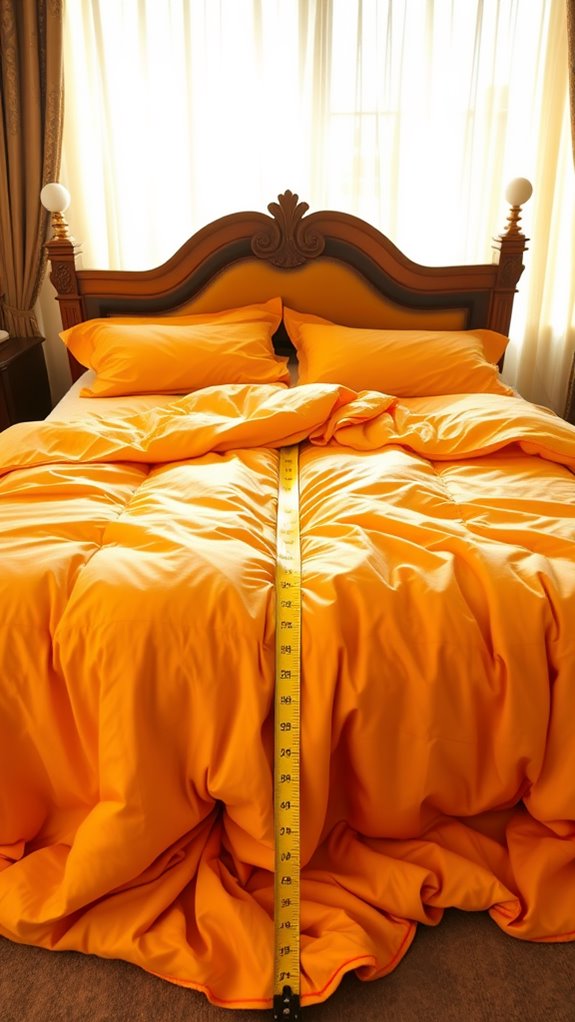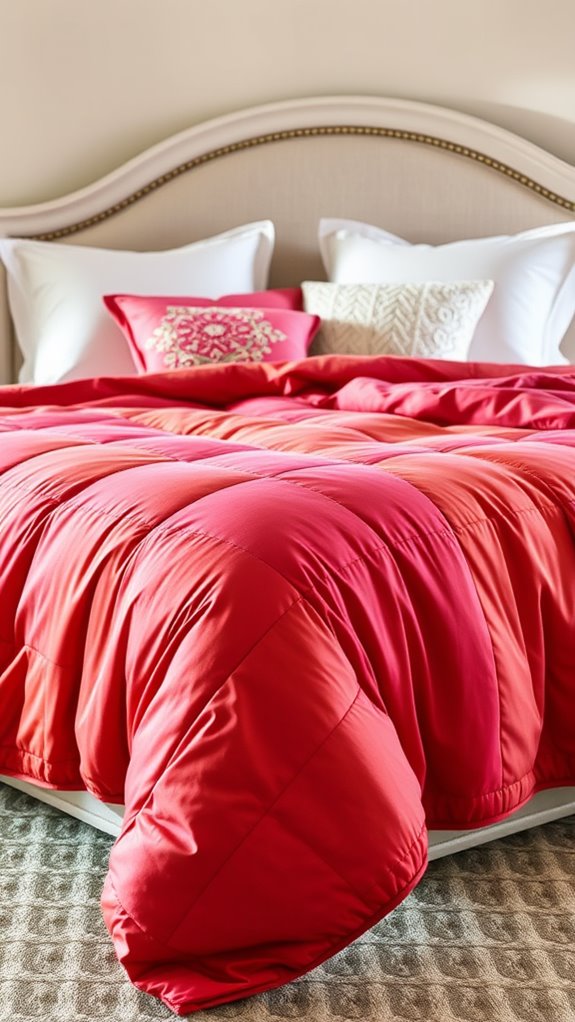Why Are King Comforters Too Small for King Bed? Solutions Inside
As I settled in for a cozy night on my king bed, I couldn’t shake the frustration of my king comforter barely covering the edges. Every night felt like a battle for warmth, with the comforter constantly sliding down and exposing the mattress. It reminded me of that one Thanksgiving dinner where I miscalculated the turkey size—too much plate and not enough bird.
Why Are King Comforters Too Small for King Bed?

Why do king comforters sometimes feel too small for king beds? Imagine this: you’ve just unboxed a luxurious king comforter, all fluffy and inviting, only to realize it barely covers the sides of your mattress. It’s like wearing a cozy sweater that somehow shrinks in the wash—frustrating, right?
One reason this happens is that not all king comforters are created equal. You see, there’s a sneaky little detail called “drop.” A standard king comforter usually measures 102 by 86 inches, but if you’ve got a tall mattress or a bed frame, you might find that extra fabric is essential. If your comforter doesn’t accommodate that drop, you could end up with a less-than-snug fit.
Another culprit? The fill. Sometimes, a comforter’s fluffiness can create the illusion of being smaller, as it puffs up rather than draping down like a waterfall. Additionally, comforter size significantly impacts sleep quality, preventing cold spots and contributing to a tidy bed appearance.
Combine that with a restless night and a couple of tosses and turns, and you’ve got yourself a recipe for comforter chaos. So, before you give your comforter the boot, check those measurements, and you might just find the perfect fit!
What Size Comforter For A King Bed

Finding the right size comforter for a king bed can make all the difference in your sleep experience. It’s like trying to find the perfect pair of jeans; you can’t just grab any size and hope for the best!
For a king bed, you’ll want a comforter that typically measures around 108 inches by 96 inches. This size guarantees you’ve got enough drape on the sides, so you’re not waking up in the middle of the night with cold feet—because who wants that?
Now, I’ve made the mistake of buying a “king” comforter that barely covered my mattress. It felt like a bad magic trick—poof! Gone! So, do yourself a favor and check the dimensions before you swipe that card.
Remember, you’re aiming for a cozy cocoon that hugs your bed, not a sad little blanket that leaves you exposed. It’s important to note that standard king comforters can range from 104″ x 92″ to 118″ x 106″, so really pay attention to those comforter size variations.
Investing in the right size comforter not only elevates your bed’s aesthetic but also enhances your snuggle game. Trust me, once you’ve got that perfect fit, you might find yourself hibernating like a bear—because who can resist the allure of a properly sized comforter?
How to Measure for a Comforter on a King Bed

Measuring for a comforter on your king bed is like finding the perfect pair of jeans—get it right, and you’ll feel snug, but get it wrong, and it’ll be a bumpy ride.
First, I’ll show you how to measure your bed to avoid those awkward situations of a comforter that’s either swimming in fabric or leaves your toes peeking out. Additionally, remember that queen comforter dimensions are typically larger than those of a Full XL bed, which can influence your choice for a king bed as well.
Then, we’ll compare sizes and check for that all-important overhang to guarantee you’re cozy all night long!
Step 1: Measure Your Bed
To measure for a comforter on a king bed, start by measuring the mattress dimensions—typically 76 inches wide by 80 inches long.
For ideal coverage, add around 12 to 16 inches to both the width and length. This guarantees the comforter hangs nicely over the sides.
Finally, check the brand’s sizing guide, as comforter dimensions can vary. Additionally, understanding the differences between bed sizes can help ensure you choose the right comforter for your needs.
Happy shopping!
Step 2: Compare Comforter Size
To guarantee a perfect fit for your king bed, measure the mattress dimensions first: a standard king mattress is 76 inches wide and 80 inches long.
When selecting a comforter, look for one that’s at least 108 inches wide and 96 inches long. This extra coverage allows for draping over the sides, providing both comfort and a polished look.
Always check product specifications for exact sizes!
Step 3: Check for Overhang
To guarantee your comforter fits perfectly on a king bed, check for overhang.
Measure the width and length of your mattress, then add an extra 10-15 inches on each side for a nice drape. This guarantees the comforter covers the sides adequately, creating a cozy, polished look. Additionally, you may want to consider the extra width that a queen comforter provides, as it can help achieve a more stylish layered appearance.
Don’t forget to take into account any additional thickness from mattress toppers!
What to Consider When Choosing a King Comforter

When it comes to picking the perfect king comforter, I can’t stress enough how important it’s to take into account the material, thickness, and warmth—after all, nobody wants to feel like they’re sleeping under a woolly mammoth!
The design also plays a big role; you want something that complements your room without making it look like a circus tent.
Let’s break down these factors so you can find the ultimate cozy companion for your king-sized bed.
Material
When choosing a king comforter, consider the material for comfort and durability. Options like cotton are breathable, while polyester offers easy care.
Look for natural fills like down for warmth or hypoallergenic alternatives if allergies are a concern.
Additionally, check for fabric weight to match your climate—lighter for warmer areas and heavier for colder climates.
Ultimately, select a material that suits your lifestyle and sleeping preferences.
Thickness and Warmth
When choosing a king comforter, consider its thickness and warmth based on your climate and personal preference.
Thicker comforters provide more warmth, perfect for colder months, while lighter options are ideal for warmer weather.
Look for materials like down or synthetic fills that suit your comfort needs.
Design
When choosing a king comforter, consider the fabric, weight, and design.
Opt for materials like cotton or microfiber for comfort and breathability. Think about the season—lighter options for summer and heavier ones for winter.
Color and pattern should complement your bedroom decor.
Finally, check the care instructions to guarantee easy maintenance.
A well-chosen comforter can elevate your space and enhance your sleep experience!
Frequently Asked Questions
Can I Use a Queen Comforter on a King Bed?
I’ve tried using a queen comforter on my king bed before. It doesn’t quite provide enough coverage, leaving the sides exposed. If you want full coverage, I’d recommend sticking with a king-sized comforter instead.
How Do I Properly Layer Bedding on a King Bed?
I love layering my king bed! I start with a fitted sheet, add a flat sheet, then a fluffy comforter. Finally, I toss on some decorative pillows and a cozy throw for that perfect finished look!
What Materials Are Best for King Comforters?
When choosing materials for king comforters, I’ve found that down and cotton are my favorites. They offer warmth and breathability, while microfiber provides a budget-friendly option. Each material has its unique benefits for a cozy night’s sleep.
Do King Comforters Come in Different Styles?
King comforters come in various styles, from traditional to modern designs. I love exploring different patterns and textures, as they can really enhance a bedroom’s overall aesthetic and create a cozy atmosphere.
How Often Should I Replace My Comforter?
I usually replace my comforter every five to seven years. It’s crucial to reflect on wear, stains, and allergens. If it’s losing fluffiness or looks tired, it’s definitely time for an upgrade.
In Conclusion
Finding the right-sized comforter for a king bed can be challenging. A comforter that is too small can lead to discomfort and cold spots during the night. Checking the measurements of your comforter and mattress, including height and fluffiness, is vital to ensure you stay warm and cozy.
If you’re struggling with a comforter that doesn’t fit, consider investing in one that matches your bed dimensions. Don’t let a small comforter ruin your sleep experience. Take the time to find the perfect fit so you can enjoy restful nights and sweet dreams.
